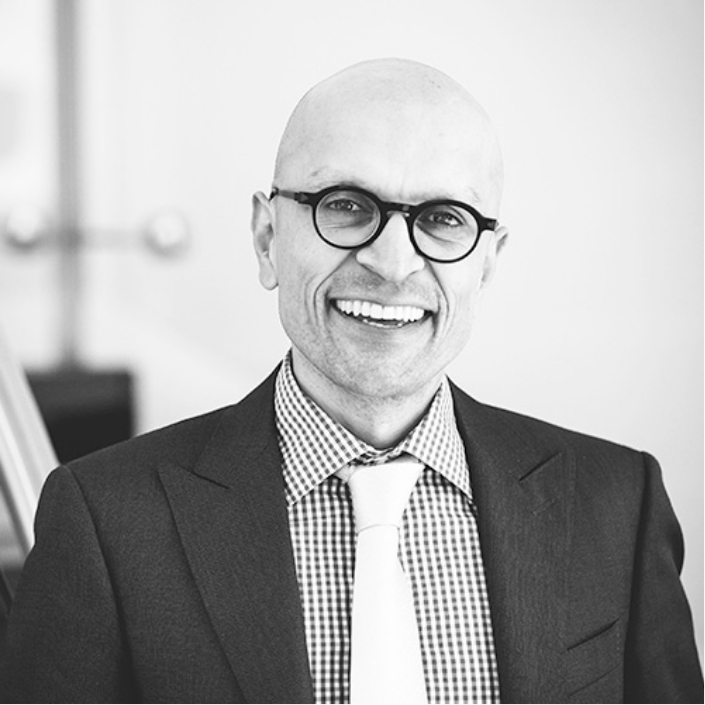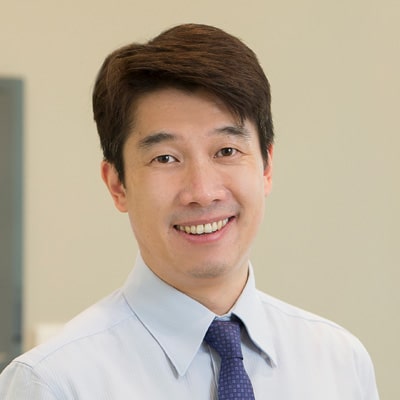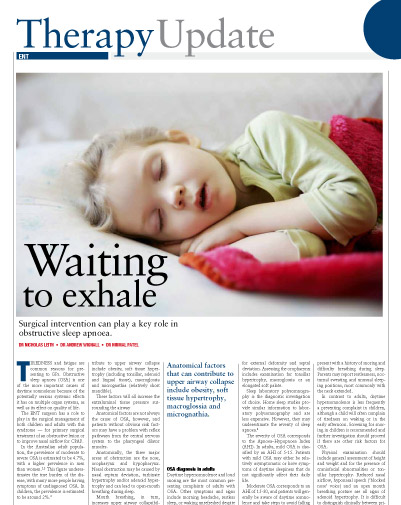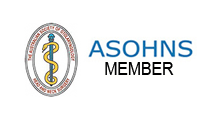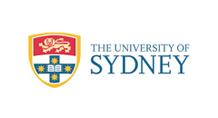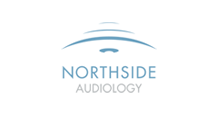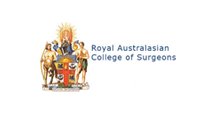Children’s Snoring
Approximately 10 percent of children are reported to snore. One to two percent have obstructive sleep apnoea.
Children’s Snoring, what is Sleep Disordered Breathing?
The commonest symptom of sleep disordered breathing (SDB) / children’s snoring. Approximately 10 percent of children are reported to snore. Ten percent of these children (one percent of the total pediatric population) have obstructive sleep apnoea.
When an individual, young or old, obstructs breathing during sleep, the body perceives this as a choking phenomenon. The heart rate slows, the nervous system is stimulated, blood pressure rises, the brain is aroused, and sleep is disrupted. In most cases a child’s vascular system can tolerate the changes in blood pressure and heart rate. However, a child’s brain does not tolerate the repeated interruptions to sleep, leading to a child that is sleep deprived, cranky, and ill behaved.
Considerable research in the last few years has demonstrated the consequences of untreated paediatric sleep disordered breathing:
Snoring
A problem if a child shares a room with a sibling and during sleepovers.
Sleep Deprivation
The child may become moody, inattentive, and disruptive both at home and at school. The child will lack energy.
Abnormal Urine Production
SDB also causes increased nighttime urine production, and in children, this may lead to bedwetting.
Growth
Growth hormone is secreted at night. Low GH secretion may lead to slow growth or development.
Attention Deficit Disorder (ADD)
Research suggests SDB can be associated with ADD.
Poor Behaviour
The worse the child’s breathing symptoms, the greater their risk of such problems as hyperactivity, behavioral problems including aggressiveness and rule-breaking, anxiety and depression, and difficulty getting along with peers.
Affects on brain development
Newer research clearly demonstrates a lack of oxygen (and a brain blood flow) to the developing brain can affect memory, concentration and brain development. More recent research (published in late 2011) showed that the IQ difference between normal and sleep disrupted children can vary by 10 – 17 IQ points.’
Worsening Asthma
Recent research has demonstrated improvement in asthma in children with Sleep disrordered breathing and asthma. One theory is that there is less mucopus dripping from infected tonsils and adenoids into the lungs.
A/ Prof Nirmal Patel
MBBS (Hons), FRACS (OHNS) MS (Research UNSW)
Specialising in Endoscopic Ear Surgery for Cholesteatoma and Chronic Ear Infection, Eustachian Tube Surgery, Cochlear Implant and Lateral Skull Base Surgery. Other interests are Children’s ENT disorders.
Dr Leo Pang
BSc (Med) MB BS FRACS (OHNS)
Specialising in Adults’ and Children’s Ear, Nose and Throat disorders, with a subspecialty interest in Head and Neck Cancer Surgery, Salivary Gland Surgery, Thyroid Surgery.
Dr Justin Kong
MBBS Bsc (MED) MMed FRACS (ORL-HNS)
Specialising in Endoscopic Sinus and Nasal Airway Surgery as well as Anterior Skull Base Surgery. Other interests are Children’s Ear, Nose and Throat disorders.
Dr Fiona Ting
MBBS (Hons 1) BSc (Med) MClinEpid, FRACS (OHNS)
Specialising in Endoscopic Sinus and Nasal Airway Surgery as well as Anterior Skull Base Surgery. Other interests are Children’s Ear, Nose and Throat disorders.
Videos relating to Children’s Snoring
Additional information
A child with suspected SDB should be evaluated by an Ear, Nose & Throat surgeon. Not all children with snoring will have large tonsils and adenoids, so a thorough history and examination will be required. If appropriate, your ENT surgeon may recommend a sleep study (usually organised after referral to a Paediatric Sleep Specialist, and performed overnight in a hospital).
If the symptoms are significant and the tonsils are enlarged, the child is recommended for adenotonsillectomy (removal of the tonsils and adenoids or T & A). Conversely, if the symptoms are mild, academic performance remains excellent, the tonsils are small, and puberty is eminent (tonsils and adenoids shrink at puberty), it may be recommended that SDB be treated only if matters worsen.
TONSILLECTOMY (ADENOTONSILLECTOMY)
For some patients, a surgical procedure to remove the tonsils (and adenoids if they cause health issues) is required, which requires a stay in hospital. The tonsillectomy or adenotonsillectomy surgery is minimally invasive, performed through the throat and with cameras through the nose, and requires a general anaesthetic. An overnight stay in hospital is required if your child is under 4 years of age, has an associated developmental condition (eg Trisomy 21) or is overweight.
If your child is over the age of 4 then often the procedure can be performed as a day surgery procedure. A variety of tools may be used to remove the tonsils and/or adenoids, including harmonic scalpel, plasma dissection, cold dissection, laser and electrocautery. Your surgeon will decide which is the best option for your particular case.
Many patients require around 2 weeks off either school or work to recover from the surgery, with post-operative pain the most concerning symptom.
Occasionally, additional surgery to adenotonsillectomy, such as turbinate cautery (reduction or turbinoplasty) may be recommended to improve nasal airflow and the success of the surgery.
Adenotonsillectomy (+/- turbinate reduction) achieves an 85 to 92% percent success rate for childhood SDB. A failure rate is due to either adenoid re-growth, allergic rhinitis (hay fever) or immature brain triggering mechanisms for breathing.
Your Ear, Nose and Throat surgeon is the best person to speak to about surgery including the benefits and risks.
Other Services
Other Services
Still have a question?
Our team will be happy to answer any questions you may have about Children’s Snoring.

